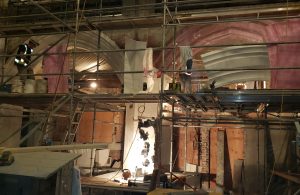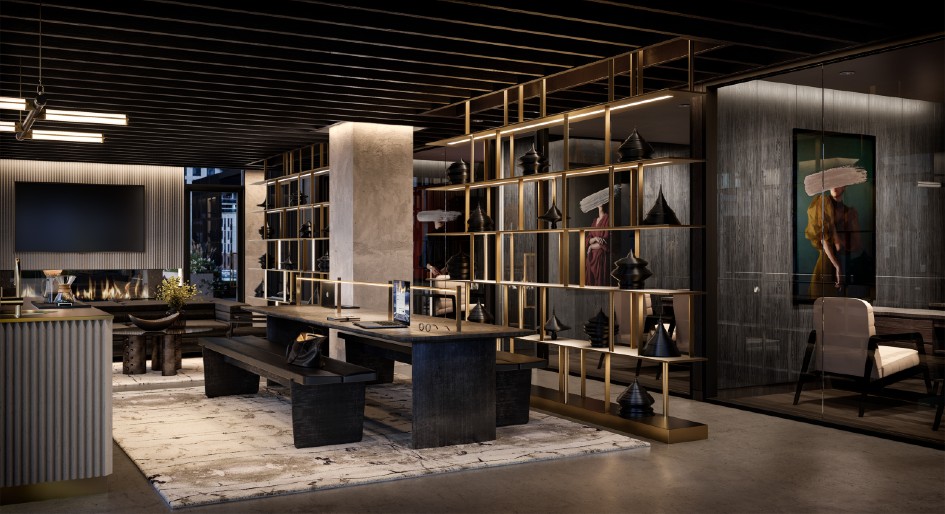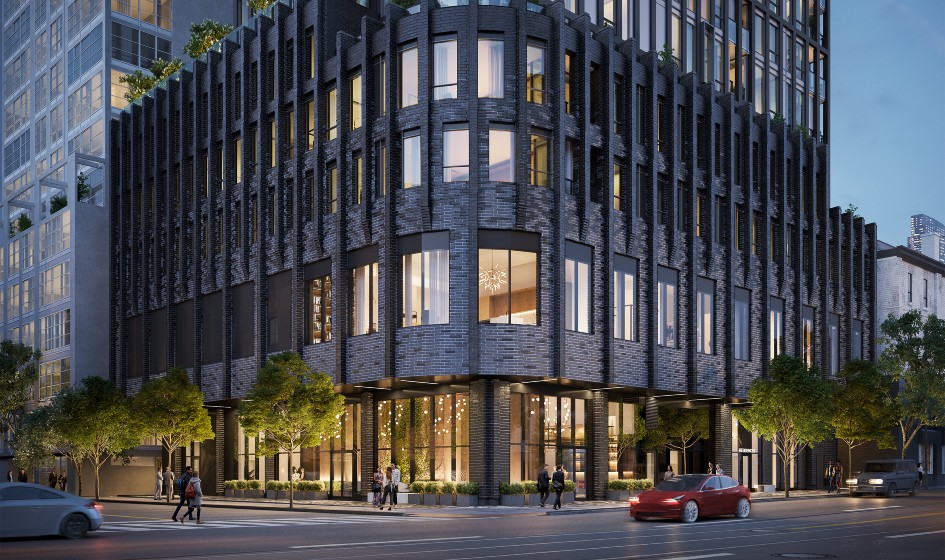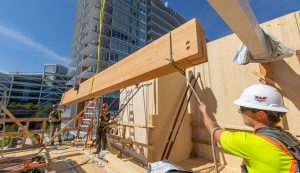As promised in last fall’s fiscal update, the Ontario government is forging a new centralized agency to identify provincially owned sites with redevelopment potential, placing a priority on new uses that align with infrastructure initiatives. Enabling legislation is included in the omnibus Bill 84, which was tabled last week to introduce two new Acts and amend nine others.
The new legislation and some hinted new regulations are framed as part of the Ontario government’s ongoing efforts to reduce red tape. Bill 84 also introduces the proposed Building Ontario Businesses Initiative Act to compel provincial departments, agencies and broader public sector entities to give preference to Ontario-based suppliers when procuring products and services, as well as an amendment to the Fiscal Sustainability, Transparency and Accountability Act so that the government can postpone the mandated date for delivering the 2022-23 budget to as late as April 30.
“With this legislation, we want to create a business-ready environment for investment, put money back in people’s pockets and make Ontario the number one choice in North America to raise a family and operate a business,” Nina Tangri, the Associate Minister of Small Business and Red Tape Reduction, asserted last week, as Bill 84 was introduced.
“Cutting red tape and modernizing our regulatory system remains a top priority for this government,” affirmed Vic Fedeli, Ontario’s Minister of Economic Development, Job Creation and Trade.
Among other measures announced in conjunction with Bill 84, regulatory changes are promised to allow for third-party ownership of rooftop solar installations, giving building owners options to avoid upfront capital outlay and ongoing maintenance costs for renewable electricity generation. “Clarifying the eligibility of third-party ownership arrangements such as leasing, financing and power purchase agreements, the (regulatory) amendments would broaden access to net metering for Ontario families, farmers and businesses,” the government’s accompanying backgrounder document states.
However, steps to do so are not actually included in Bill 84 since the authority to set or amend regulations rests with the Minister and legislative approval is not required. Neither does the Bill address the announced plan for a pilot program to allow select auto dealerships to register new vehicles online and issue permits and plates to purchasers.
Legislative amendments include some implications for real estate
The proposed new Centre of Realty Excellence (CORE) is introduced through an amendment to the Ministry of Infrastructure Act to establish centralized oversight of government property. The resulting agency will be tasked with implementing a “co-ordinated and consistent approach” for achieving more productivity and value from obsolete or under-used government property, or for disposing of sites that are determined to no longer fulfill government or broader public sector needs.
The 2021 fall fiscal update describes the agency as a “holistic sight line across the public sector” to designate surplus properties that could be quickly repurposed for long-term care homes or other initiatives deemed to be a priority. “Taking a government-wide approach will help drive leaner processes and greater efficiencies and allow the government to realize greater value nimbly and efficiently from government real estate, maximizing the value for Ontario taxpayers,” the fiscal update stated.
An online repository of real estate data is also promised for tracking the status of provincially owned and broader public sector properties, including municipal, school, university/college and health care sites. The Ministry of Government and Consumer Services will administer the information, which is to be open to the public.
“The portal could be used by both the public and government to identify potential synergies and strategic projects, and to provide more comprehensive options for government realty decisions. Although the portal is not included as part of the proposed legislative amendments to the Ministry of Infrastructure Act, its implementation would help support the objectives of CORE,” the Bill 84 backgrounder advises.
There are also a couple of direct implications for real estate owners/mangers or developers in Bill 84’s other contemplated amendments. Notably, proposed changes to the Liquor Licence and Control Act would give the police broader powers to enter and inspect licensed establishments without a search warrant if they have a reasonable belief that the Act has been contravened.
For a much smaller number of mineral explorers, proposed changes to the Mining Act would allow owners or lessees of mining properties to include the cost of consultation with aboriginal communities as an eligible component of retained proceeds from the sale of minerals that have been extracted for testing purposes. (Under the legislation, after designated exploration cost exemptions are subtracted, the balance of proceeds must be submitted to the Province.)
New legislation promises fee reimbursement for delayed service delivery
Meanwhile, the two new Acts introduced through Bill 84 could resonate with commercial real estate operators and/or their service providers. Under the proposed At Your Service Act, both types of businesses could qualify for up to a full reimbursement of their fees if a provincial Ministry or prescribed provincial entity fails to comply with prescribed service standards such as a required timelines for responding to applications for approvals, permits or licences.
Records of Ministries’ and other entities’ performance and required payouts are to be made publicly available online. Similar to the real estate database to support CORE, the government has also announced plans for a one-window portal for prospective new businesses to “access authoritative information and services they need to get up and running”, but those details are not found within the proposed Act.
Under the proposed Building Ontario Businesses Initiative Act, it’s intended that Ontario-based suppliers would be given priority in government and broader public sector procurement for purchases up to a prescribed threshold amount. Further details would be provided in the regulations once the Act is adopted. In an associated pledge, the government is also committing to convert its vehicle fleet to made-in-Ontario electric or low-emission vehicles.
“Ontario businesses are critical in ensuring the future health of our provincial supply chain,” the government’s backgrounder maintains. “In the COVID-19 recovery phase, we are focused on protecting the progress that has been made and building up Ontario businesses to get our economy back on track.”





 In terms of preserving the aesthetic, Fowlie says the key is to determine which repairs are essential versus which areas can be left in their original form. It’s a critical balancing act that must be achieved to maintain a building’s look while prolonging its useful service life. He offers the example of a 100-year-old heritage site his team is currently restoring, highlighting the importance of taking the right steps to ensure all parties are satisfied with the outcome.
In terms of preserving the aesthetic, Fowlie says the key is to determine which repairs are essential versus which areas can be left in their original form. It’s a critical balancing act that must be achieved to maintain a building’s look while prolonging its useful service life. He offers the example of a 100-year-old heritage site his team is currently restoring, highlighting the importance of taking the right steps to ensure all parties are satisfied with the outcome.



 Moving into further detail, Sayewich poses another example: “Think of those automatic doors at a mall; much like they’re programmed to slide open upon approach, building elevators will require this same type of coverage to ensure elevator doors do not close as one advances towards it.”
Moving into further detail, Sayewich poses another example: “Think of those automatic doors at a mall; much like they’re programmed to slide open upon approach, building elevators will require this same type of coverage to ensure elevator doors do not close as one advances towards it.”
 Ultimately, these changes significantly upgrade elevator safety, however, they will require additional work. Even if property stakeholders are not currently planning any repairs or upgrades, it is in their best interest to keep up-to-date with new and evolving changes to elevator codes and plan accordingly.
Ultimately, these changes significantly upgrade elevator safety, however, they will require additional work. Even if property stakeholders are not currently planning any repairs or upgrades, it is in their best interest to keep up-to-date with new and evolving changes to elevator codes and plan accordingly.

